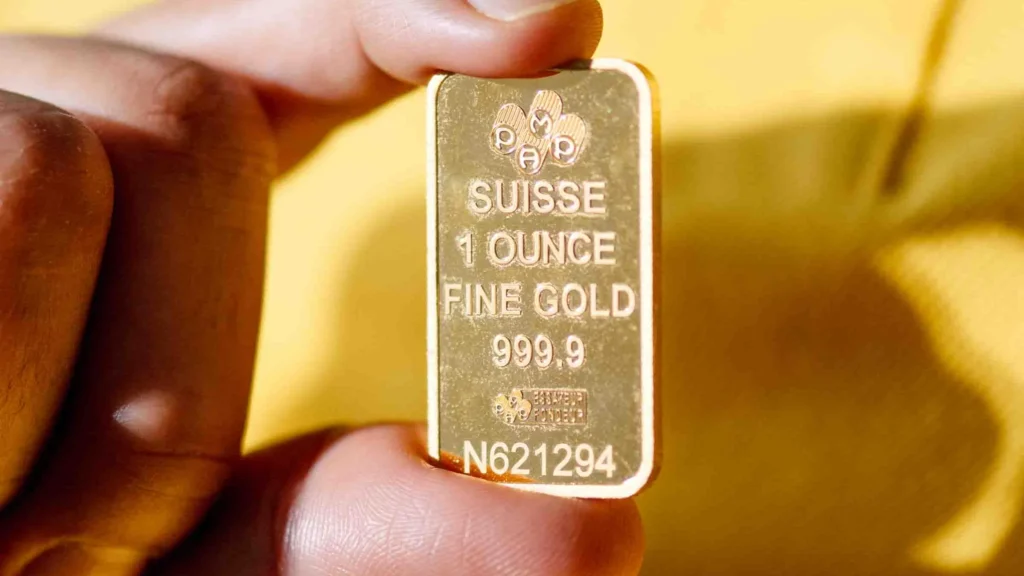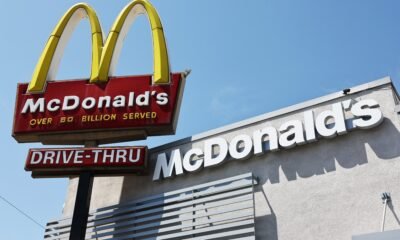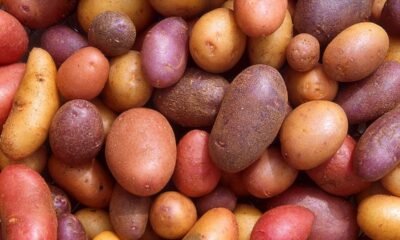Business & Economy
Most Important Memphian Ever’ — FedEx Founder Fred Smith Dies at 80: How One Man Made Memphis Matter to the World
Frederick W. Smith, Marine, mentor, and the mind behind FedEx’s global empire, passes away — leaving behind a transformed city and a legacy few can match.

Memphis has lost its greatest champion. Frederick W. Smith, the visionary who turned a college paper into a global logistics powerhouse and redefined his adopted hometown’s place on the world map, has died at 80.
Born on August 11, 1944, in Marks, Mississippi, Smith’s story is woven into Memphis’ DNA. Long before FedEx’s purple and orange jets became a symbol of overnight possibility, Smith was a Yale student pitching an idea his professor didn’t believe in — he earned a ‘C’ for his paper on reliable overnight delivery. But the world soon graded him much higher.
In 1971, Smith incorporated Federal Express, and two years later, operations began. It wasn’t easy: the company teetered on bankruptcy, once surviving thanks to Smith’s improbable blackjack winnings in Las Vegas. That gamble paid off — big time.
FedEx didn’t just deliver packages; it delivered prosperity. During COVID-19, its Memphis hub shipped life-saving vaccines around the world. Today, the company employs thousands locally and countless more globally. Its economic gravity has reshaped Memphis, fueling families, businesses, and dreams for generations.
Beyond commerce, Smith’s impact was deeply personal and civic. His millions built stadiums, funded local sports, and sponsored iconic events like the FedEx St. Jude Championship. Former Memphis Mayor Jim Strickland didn’t mince words: “Fred Smith was the most important Memphian of all time… every good thing that’s happened here in the last 40-50 years has his fingerprints on it.”
His generosity wasn’t reserved for boardrooms or ribbon cuttings. After philanthropist Gayle Rose lost her son, Smith called her simply to say: “It’s awful. I’m so sorry.” No platitudes — just the presence of a man who knew grief, having lost his own daughter, Wendy, in 2005.
Smith’s spirit was forged in the fires of Vietnam, where he served two tours as a Marine, earning two Purple Hearts and a Silver Star. He often credited the Corps for shaping his leadership more than any classroom: “More important than my formal education, I might add,” he once said.
In the end, Memphis wasn’t just the headquarters for his empire — it was home. A city made better by his vision, wealth, and unwavering love. Rep. Steve Cohen called him “Mr. Memphis,” while Sen. Brent Taylor said he “made Memphis matter to the world.”
It’s hard to imagine the city’s skyline, its economy, or even its spirit without the hum of FedEx planes overhead — a daily reminder that a man named Fred Smith dared to dream big and deliver even bigger.
Rest in peace to a Marine, a mentor, and, by all accounts, the most important Memphian ever.
Business & Economy
“Why Michael Dell Just Donated $6.25 Billion… and How 25 Million American Kids Will Benefit From ‘Trump Accounts’”
A historic philanthropic move by Michael Dell and Susan Dell aims to seed investment accounts for millions of U.S. children left out of a new federal program.

In one of the most remarkable acts of modern philanthropy, tech billionaire Michael Dell (founder of Dell Technologies — and his wife Susan Dell (philanthropist — have pledged a staggering $6.25 billion to help 25 million American children start their financial futures with a meaningful boost.
The initiative is tied to the federal government’s new tax-advantaged “Trump Accounts” program — named during the administration of Donald Trump — designed to encourage long-term savings and early investment habits. But the government grants only apply to children born between 2025 and 2028, leaving millions of kids excluded.
The Dells decided to change that.
A Donation Unlike Anything Seen Before
According to Invest America (a nonprofit founded by hedge-fund manager Brad Gerstner — , the Dell family’s pledge is the largest donation ever made directly for American children.
Speaking to CNBC, Michael Dell said:
“We want families to feel supported from day one. When children have accounts like this, they’re far more likely to graduate, buy a home, start a business… and less likely to end up incarcerated.”
Under the new system, the U.S. Treasury will automatically deposit $1,000 into Trump Accounts for qualifying newborns starting in 2025. But millions of children who are already older will not receive this grant.
To bridge that gap, Michael and Susan Dell will provide $250 each for 25 million children aged 10 or under, living in ZIP codes where the median household income is $150,000 or less.

Why the Dells Believe in Early Investment
The inspiration came years earlier. Around 2021, Brad Gerstner, CEO of Altimeter Capital , floated the idea of nationally seeded accounts during a conversation with Michael Dell. Gerstner later went on to advocate for these accounts to be included in the federal One Big Beautiful Bill Act.
These Trump Accounts can only be invested in low-cost, diversified index funds tracking the U.S. stock market — a structure meant to encourage stable financial growth, not risky speculation.
Gersten noted:
“The seed money alone won’t create wealth. But it motivates parents to keep contributing. That’s where compounding works its magic.”
The program also makes it easier for corporations and philanthropists to contribute. In fact, Dell Technologies has already committed to matching the government’s $1,000 grant for the children of its employees.
A Generational Impact — If Americans Embrace It
While Trump Accounts don’t carry the full tax benefits of tools like 529 college plans or Roth IRAs, the simplicity and automatic seeding make them uniquely accessible. Kids can’t withdraw money until they turn 18; at that point, the funds transfer to an IRA.
For millions of low- and middle-income families, this could be the first time their children have ever owned an investment account.
Michael Dell believes this is how real change begins:
“You think about the compounding effect in 10, 20, 30 years… that’s what gets us excited.”
He also revealed that he’s already in private talks with other major philanthropists — and is optimistic that more billionaires will join the effort.

A Model With Few Precedents
There are only a handful of similar statewide initiatives. The closest is the Harold Alfond Foundation in Maine, which gives $500 educational grants to newborns.
But the scale of the Dell pledge is unprecedented — 25 million children receiving financial support at once.
If successful, today’s announcement could spark a new era of public-private collaboration to build generational wealth, especially for families who have never had access to financial markets.
A Future Worth Saving For
As Michael Dell put it:
“What we hope is that every child sees a future worth saving for.”
Whether this becomes the catalyst for long-term financial equity in America depends on how parents, corporations, and lawmakers participate in the years ahead.
But one thing is certain: the conversation about building wealth from childhood — not adulthood — has officially begun.
For more Update DAILY GLOBAL DIARY
Business & Economy
Gold Price Hits $3,700 in 2025 Shocking Investors as Costco Gold Bars Nearly Double in Value
From under $2,000 in 2023 to nearly $3,700 today, Costco’s gold bars have become the hottest investment story of the year.

Gold is back in the headlines—this time breaking all records. On September 16, 2025, the price of gold surged past $3,700 per ounce, making it one of the biggest jumps in recent years. Just a year ago, gold traded at around $2,300. Now, investors who purchased a Costco gold bar in 2023 are sitting on gains of nearly 100%.
The surge comes as traders bet on interest rate cuts from the Federal Reserve while ongoing geopolitical tensions and inflation fears continue to rattle global markets. For everyday shoppers, however, the story has a unique twist: the unlikely rise of Costco Wholesale as a player in the precious metals market.
The Costco Gold Rush
In 2023, Costco quietly introduced 1-ounce gold bars for its members. At the time, prices hovered around $1,950 each, according to USA Today. What followed was nothing short of a frenzy. Shoppers snapped them up so quickly that Costco had to implement a restriction: only two bars per customer, per day.
By May 2025, those same bars were selling above $3,000, and by mid-September they had climbed to about $3,700. The company also listed silver and platinum bars, but gold has remained the undisputed star.
On September 17, 2025, Costco’s online listing for gold showed the item as sold out. Membership-only access means non-members can’t even view the pricing, but demand has remained relentless.

Competitors Join the Trend
It isn’t just Costco capitalizing on the craze. Walmart also sells gold bars. On September 17, it listed a 1 oz Pamp Suisse Lady Fortuna Veriscan Bar at $3,818, slightly higher than Costco’s offering.
The message is clear: gold isn’t just for Wall Street hedge funds anymore—it’s on the shelves of America’s biggest retailers.
Why Is Gold So High?
Gold has long been considered a safe-haven asset, often rising during times of uncertainty. Several factors are fueling today’s surge:
- Geopolitical Tensions – Ongoing instability in the Middle East has increased demand for safe assets.
- Inflation Fears – Rising prices across sectors continue to erode confidence in currencies.
- Stock Market Volatility – Investors are nervous after turbulent trading sessions since 2023.
- Federal Reserve Policy – Hints of interest rate cuts from the Fed have boosted gold’s appeal.
In short, gold has regained its shine as a store of value.
How Much Is Your Costco Gold Bar Worth Now?
If you bought a Costco bar in October 2023, you paid under $2,000. At today’s market price of $3,700, that’s nearly a 100% gain in just two years.
Even investors who bought last year—when gold was hovering around $2,300—are looking at gains of more than 50%. For many casual buyers, this has been their first real taste of gold investing, and the results have been extraordinary.

Selling Your Gold: Not as Easy as Buying
While it may be tempting to cash in, experts caution that reselling gold is not straightforward. According to NerdWallet, sellers should expect to receive less than the spot price. Buyers such as pawn shops, jewelers, or gold dealers still need to leave room for their own profit.
Online marketplaces are another option, but getting multiple quotes is crucial before selling. As with any investment, patience and timing could make a big difference.
Year-End Forecast
Where does gold go from here? The Australia and New Zealand Banking Group recently raised its forecast, predicting gold could hit $4,000 by June 2026. If true, Costco’s gold bars may continue to be one of the hottest investments available at retail level.
More Than Just a Commodity
What’s fascinating is not just the price of gold but the cultural shift it represents. Once considered an investment only for the wealthy or institutional investors, gold is now being purchased during weekend shopping trips to Costco. This democratization of gold ownership is reshaping how Americans view wealth and security.
From Bayonne, New Jersey, where a customer proudly showed off his purchase in October 2024, to shoppers in California and Texas, Costco gold bars have become a conversation starter as much as an investment tool.
Final Thoughts
The story of Costco’s gold bars is about more than a shiny metal—it’s about timing, opportunity, and a retailer that tapped into consumer psychology at exactly the right moment. Whether prices keep rising or cool off, one thing is certain: those who bought early have already struck gold.
For deeper updates and analysis on global business trends, Visit our site for more news www.DailyGlobalDiary.com.
Business & Economy
Big Red Flags 7 Shocking Truths About the Dodgy Super Fund Scheme Exposed
Australians are being warned of high-risk superannuation scams using cold calls and false promises of massive returns—authorities reveal what you must know.

Table of Contents
When your phone rings and a stranger insists they can help you switch your superannuation fund to a “bigger, better” scheme, it might feel tempting. After all, who doesn’t want higher returns on retirement savings? But regulators say this is one of the biggest red flags of 2025.
According to the Australian Competition and Consumer Commission (ACCC), an alarming wave of “super switching” scams has been targeting vulnerable Australians—especially retirees—by luring them into high-risk, high-fee investments. These scammers operate through cold calls, social media ads, and even fake referrals to financial advisers.

The National Anti-Scam Centre reported that in 2024 alone, Australians aged over 65 lost nearly $100 million, the highest amount among all age groups.
“Dodgy” schemes play on fear
Xavier O’Halloran, CEO of Super Consumers Australia, explained that these schemes exploit people’s fears about retirement. “They push people into dodgy investments by promising unrealistic high yields,” he said. The catch? Victims often pay tens of thousands upfront and then face ongoing hidden fees.
Much like the collapsed First Guardian and Shield Master Funds, these schemes trap investors into complex, high-risk products with very little chance of long-term stability.
ASIC warns of “Big Red Flags”
The Australian Securities and Investments Commission (ASIC) issued a July alert urging Australians to be on guard. Deputy Chair Sarah Court warned:
“Being asked to make a quick decision is one of the most obvious red flags. Remember, a good deal won’t vanish overnight.”
She added that even experienced investors can struggle to spot the flaws in these schemes because of how persuasive salespeople can be. “Once you start on the path, it can be hard to get off,” Court cautioned.

These scammers typically present themselves as helpful advisors, claiming they can “locate lost super for free” or introduce you to a trusted financial adviser. In reality, they are often earning commissions for transferring your funds.
Google and COTA fight back
To combat the rising scam wave, Google partnered with the Council on the Ageing Australia (COTA) during Scams Awareness Week (August 25–29). Nearly 1,000 seniors participated in a special digital safety program named Project BRIDGE (Building Resilience, Inclusion and Digital Growth for Elders).
Bec Turner, Google Australia’s Public Policy Manager, said the initiative was “vital” to keeping communities one step ahead of scammers. The sessions taught not only how to spot scam tactics, but also how to strengthen digital literacy and stay safe online.
Trustees under pressure
Earlier in 2025, ASIC wrote to superannuation trustees demanding stronger anti-scam practices. Trustees, considered “gatekeepers” of retirement funds, were warned they cannot outsource their responsibilities when it comes to protecting clients.
An ASIC review of 15 funds revealed a startling truth—many had no anti-scam strategy at all, putting millions at risk.

What you can do if targeted
If you receive a cold call pressuring you to switch superannuation funds:
- Ask questions about the caller’s relationship with the fund. If commissions are involved, walk away.
- Never rush into decisions. Scammers thrive on urgency.
- Hang up if you feel pressured—legitimate advisers won’t mind you taking time.
- Check with ASIC and official fund websites before making any moves.
- If you think you’ve been caught, contact IDCARE on 1800 595 160, Australia and New Zealand’s national identity and cyber support service.
The bigger picture
With Australia’s retirement system valued in the trillions of dollars, scammers see a goldmine. Regulators, tech companies, and advocacy groups are now racing to outsmart these schemes. But as Sarah Court put it, “scammers are always evolving”—which means staying alert is the best defense.
For anyone nearing retirement, the dream of financial security should not become a nightmare of financial loss. The next time you’re promised “unrealistic returns” over the phone or through a flashy online ad, remember the words of ASIC: “A good deal won’t vanish overnight.”
Visit our site for more news www.DailyGlobalDiary.com
-

 US News1 week ago
US News1 week ago“She Never Made It Out…” Albany House Fire Claims Woman’s Life as Family Pleads for Help to Bring Her Home
-

 Entertainment1 week ago
Entertainment1 week agoXG Star Cocona Shares a Brave Truth at 20 — “I Was Born Female, But That Label Never Represented Who I Truly Am…”
-

 Entertainment1 week ago
Entertainment1 week agoSamba Schutte Reveals the Surprise Cameo in Pluribus That “Nobody Saw Coming”… and Why John Cena Was Perfect for the Role
-

 Entertainment5 days ago
Entertainment5 days agoSaudi Arabia’s entertainment revolution… Red Sea Film Foundation CEO Faisal Baltyuor says he ‘wears many hats’ — but one mission drives them all
-

 Entertainment5 days ago
Entertainment5 days ago“Nicholas Hoult breaks silence on childhood fears… ‘Everyone told me child actors disappear’ — what he revealed at Red Sea Festival
-

 Entertainment1 week ago
Entertainment1 week agoMandy Moore Signs On for a Bold New Peacock Erotic Thriller — “A Twisted Game Where the Student Becomes the Teacher…”
-

 Entertainment3 days ago
Entertainment3 days agoAmy Schumer and Chris Fischer Split After 7 Years of Marriage — Inside Their ‘Cohesive’ and Amicable Divorce
-

 Politics6 days ago
Politics6 days ago“If I Can’t Beat Jimmy Kimmel, I Shouldn’t Be President…” Trump Drops Bold Claim Ahead of Hosting Kennedy Center Honors




























